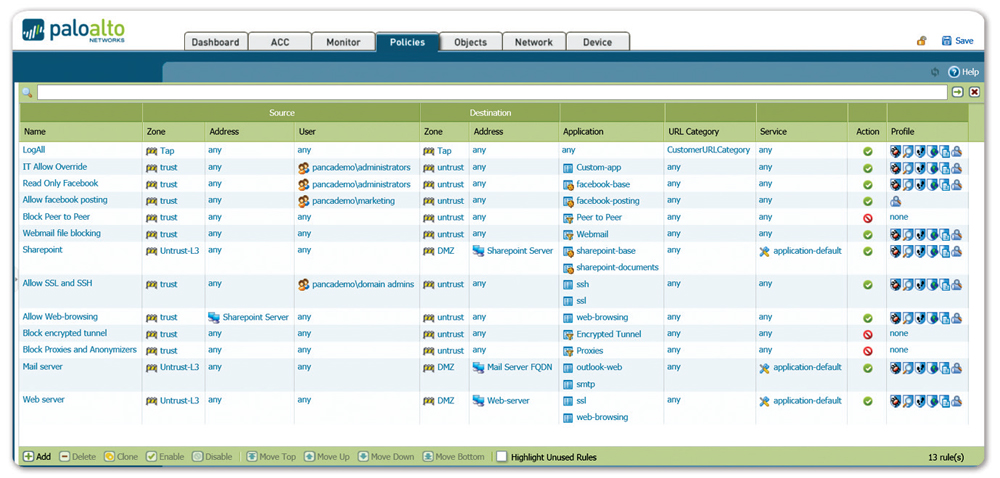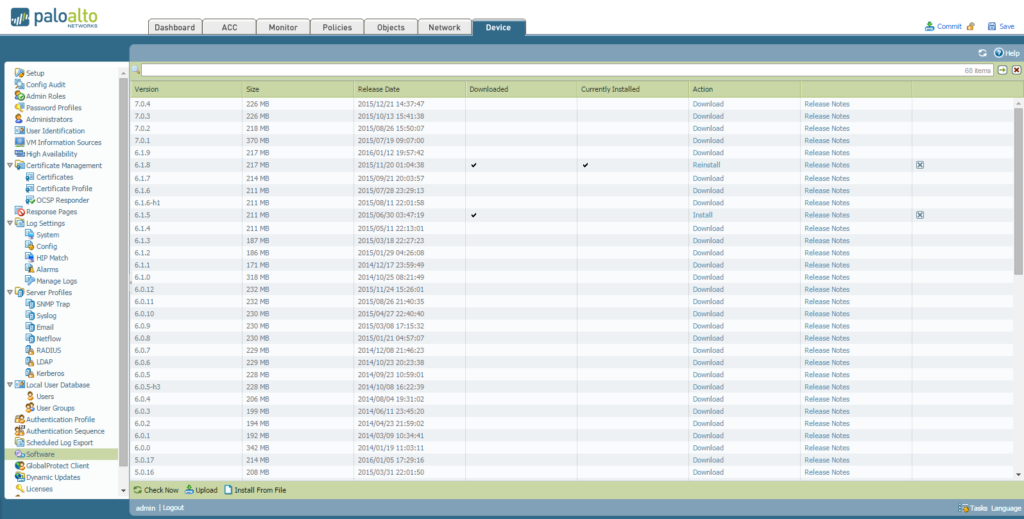Palo alto download software sync to ha peer
Today, the smooth connectivity and security that businesses offer in this digitally driven world is almost a given. Palo Alto Networks is one of the leaders in the world of cybersecurity, offering very robust solutions for organizations that are committed to a secure network environment. One of the principal functions of Palo Alto software is the synchronization of configurations to High Availability (HA) peers. This article offers a comprehensive overview of the process, thus ensuring users can drive their network configurations effectively.
Overview Palo alto download software sync to ha peer

Palo Alto Networks’ software is engineered to maximize the advanced security features and overall efficient management tools. When deploying firewalls in a High Availability (HA) configuration, it becomes an absolute requirement that the settings and policies be synchronized between the primary and the secondary device so that both units work in tandem maintaining uninterruptive services and security.
Synchronization of your HA peers helps with disaster recovery as well as load balancing between the devices. The process is usually intricate especially for first time users of network management, but with correct guidance, navigation through the setup is easy.
The article will therefore break down the synchronization process into very doable steps. It then covers, in very extensive detail, topics ranging from an initial setup to troubleshooting common issues, so that all users can be given a smooth experience. The aim here is to bring network administrators up to speed with the knowledge they need to use Palo Alto’s software effectively.
In addition, the article outlines the main and additional functions of Palo Alto software, thus shedding light on its potential. Familiarization with these functions will help to achieve maximum exploitation of the software in business practice.
Finally, we will offer technical specifications, system requirements and troubleshooting information so the user will know everything about the software. Whether a seasoned practitioner or a beginner, here is your helpful guide.

Step-by-Step Instructions for Syncing HA Peers
Syncing HA peers is just the beginning. Click Start to begin this step-by-step process.
Step 1: Initial Setup
Make sure that both Palo Alto devices are configured and located on the same network before syncing your HA peers. Both devices should have identical HA configurations. Some of the configuration settings include management IP addresses, mode, and peer addresses.
Step 2: Open the Web Interface
You need to log into the web interface of the active Palo Alto device. Then from the menu on the left-hand side, click Device followed by High Availability. Selecting High Availability takes you to the HA configuration page.
Step 3: Configuration of HA Settings
From this HA configuration page, set the HA mode to Active/Passive or Active/Active depending on your preference. Then input all the required parameters, including HA peer address and heartbeat interval.
Step 4: Synchronize Configuration
Once you have set all your HA settings, just click the Synchronize button. This will invoke a process to copy the configuration from the active device into the passive device. This is an important phase to ensure that the two devices are synchronized and have the same settings.
Step 5: Synchronize Confirmation
Once you finish this process, you need to check if the configuration on both devices is the same. One way to do that is through the Configuration tab, where you ensure all configurations are the same.
Step 6: Monitor HA Status
The HA status should be monitored regularly. Under the High Availability section, you can monitor the status of both peers. If discrepancies are found, this should be attended to as soon as possible to prevent network issues.
Step 7: Regular Backups
Set up a regimen for duplicating the configuration of both devices. In this way, you will always be able to access configurations should these fail or be incorrectly configured.
Step 8: Documentation
Dedicate documentation of your HA configuration and the changes made to it. These can save you quite a lot of time and effort when troubleshooting or making future upgrades.

Features
- High Availability: No disruption in providing a service.
- Load Balancing: Spread traffic across devices.
- Central Management: Offers management of hundreds of thousands of devices in one pane.
- Proactive Security Policies: Blocks all types of attacks.
- Real-time Network Performance: It enables availability of network performance information.
- User-Friendly Interface: With easy navigation and administration.
- Alert Features: Offers customizable triggers-based alert offerings
- Reporting Tools Included: Traffic and security incidents are analyzed

Technical Details of This Version
- Version: 10.2.1
- User Interface Languages: English
- Developed by: Palo Alto Networks
- Game/Software Type: Network Security Software
- Audio Language: N/A
- Uploader / Repacker Group: PaloAltoGroup
- File Name: palo_alto_10.2.1.zip
- Download Size: 500 MB
System Requirements for Palo alto download software sync to ha peer
Minimum
- OS: Windows 10 or later
- Processor: Intel Core i3 or equivalent
- RAM: 4 GB
- Storage: 1 GB of free space
Recommended
- OS: Windows 10 or later
- Processor: Intel Core i5 or equivalent
- RAM: 8 GB
- Storage 2 GB free space

Download and installation of the Software
Download the Palo Alto software above. After downloading, extract the file and run the setup. I’m probably sure you will have to input your password to run the file, where you would look to get it from your download confirmation.
More Details
Download more software and visit below link
It will guide a user in learning the appropriate understanding that ultimately leads to successfully synchronizing the Palo Alto software with HA peers, ensuring robust security and continuity in operations.

Leave a Reply